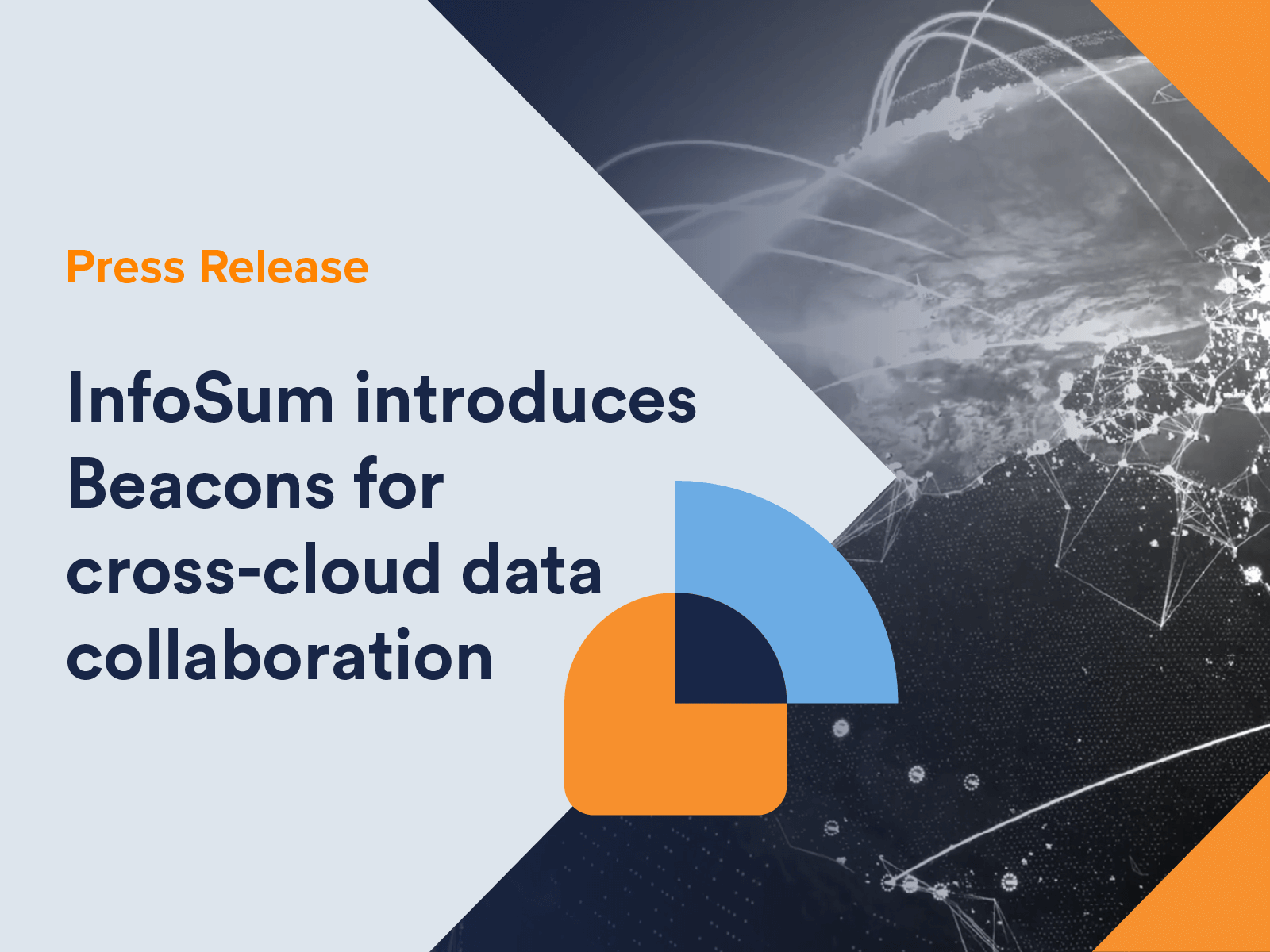The conversation around cookie deprecation can feel like Groundhog Day. While many of us have grown tired of seeing endless photos of cookies on our LinkedIn feeds, keeping this discussion alive has been essential. Why? Unfortunately, too many businesses are willing to bury their heads in the sand and wait until they have to move away from third-party cookies. Equally, many legacy tech providers are happy to continue selling short-term advertising solutions built on third-party identifiers that simply won’t survive the upcoming changes.
In January, Google began blocking third-party cookies for 1% of its users. While speculation is already rife that we will not see the final deprecation of third-party cookies in 2024, it’s time companies take their destiny into their own hands. The industry has never been better positioned to reimagine and restructure advertising strategies for the new cookieless era.
Here’s where InfoSum has a unique advantage. In the current landscape, crowded with emerging, untested technologies and legacy third-party solutions desperately attempting to pivot into the new first-party data era, InfoSum is neither. InfoSum was purpose-built for the modern advertising ecosystem. From day one, our technology has been designed to work in a cookieless ecosystem, and we have spent the last few years working with trailblazing organizations across the globe to prepare for this moment.
We have dug into the hundreds of collaborations that have used our data clean room technology and prepared our top five tips to ensure you’re prepared to go cookie-free!
1. Prioritize and protect first-party data
First-party data is information an organization collects about its customers as they interact directly with the brand. This data can be from online and offline sources, for example, behavioral data from an app, website or other platform. This data is arguably one of an organization's most important assets, as it is highly relevant and accurate.
The first sign of cookie deprecation came in 2017 when Apple introduced Intelligent Tracking Prevention (ITP) in Safari. At that time, innovative businesses made collecting and protecting first-party data assets a critical part of their data and marketing strategy, lessening their reliance on third-party identifiers such as cookies for targeting and measurement. These businesses are now 6+ years into their first-part data journey and are demonstrating that this data fuels better performance when used safely and effectively.
After investing time and resources into collecting and nurturing first-party data, it’s crucial to recognize it as a valuable business asset and protect it at all costs. Therefore, to activate that data into the advertising ecosystem, businesses must follow a simple but essential rule - never share it!
2. Identify gaps and fill them with second-party data
While first-party data offers accuracy and richness, robust marketing decisions often require more breadth of customer knowledge. First-party data primarily consists of direct customer interactions and, therefore, might lack the behavioral and demographic attributes crucial for effective audience segmentation, lookalike modeling, and personalization.
Traditionally, third-party data has filled this gap. With the demise of third-party cookies, this data has also been weakened, necessitating the need to seek out alternative ways to enrich customer knowledge. Consequently, second-party data has gained prominence in recent years.
Second-party data is another organization's first-party data. This means that the data comes with all the quality benefits of first-party data but provides your organization with a fresh and more complete perspective of your customers. To safely combine the power of first and second-party data, remember our first simple rule - never share data. Especially with a ‘headless’ data company (credit Neil Sweeny.) Instead, businesses should rely on data collaboration technology that enables them to unlock the full richness of these data sources without sharing, centralizing or combining them.
Data clean room technology enables businesses to collaborate, build networks of data partners and deliver lucrative advertising solutions that power high-performing advertising campaigns.
3. Build out your data network partners
Unlocking the full potential of data collaboration involves thinking creatively and forging strategic partnerships across various industries. The opportunities are boundless, requiring an imaginative approach to data collaboration. Media owners, for instance, can collaborate with retailers, offering Consumer Packaged Goods (CPGs) a richer dataset for more informed media planning. Similarly, airlines joining forces with hotel chains to create a travel media network can enhance travel experiences by tapping into diverse data sources.
This collaborative strategy has manifested in multiple ways, notably in 2023, with the convergence of retail media and connected TV. In the UK, trailblazing partnerships between major entities such as Channel 4 and Nectar360, ITV and Tesco/dunnhumby, and ITV and Boots exemplify the efficacy of this approach. These visionary companies, already at the forefront of data network development, are reaping impressive results by tapping into first, second, and third-party data sources. For example, using InfoSum’s data clean room, Nectar360 and Channel 4 delivered up to 122% sales uplift for CPGs.
Parties can build robust data networks by embracing inventive collaborations that transcend industry boundaries. These networks enrich the quality and depth of available data and foster synergies that drive innovation and deliver better experiences for businesses and consumers.
4. Test, Learn and Iterate
In anticipation of the impending demise of third-party cookies, proactive organizations didn't wait for the final curtain call. They wisely invested in cutting-edge data collaboration technologies, fortifying their marketing strategies and safeguarding advertising revenue against impending changes. However, for those who hesitated, the time for action is now.
To prepare for the cookieless era, embrace a culture of continuous improvement. Test new technologies and strategies, experimenting with different approaches to leverage first-party data effectively. Draw inspiration from the successes and learn valuable lessons from the challenges encountered during these tests. This iterative process allows organizations to refine and optimize their methods, ensuring a well-honed strategy by the time Google completes the third-party cookie deprecation by the end of Q3 2024.
By actively engaging in this testing, learning, and iterating cycle, organizations can stay ahead of the curve, adapting swiftly to the evolving advertising landscape. This proactive stance mitigates potential disruptions and positions brands to thrive in the era of first-party data, laying a robust foundation for sustained success in the post-cookie digital ecosystem.
5. Create your competitive edge
The advertising industry stands on the precipice of a new era built on collaboration and privacy. The most successful businesses will embrace this new era rather than lament the era of cookies and data sharing. By doing so, customer-centric organizations will recognize that privacy and performance are no longer combatants but perfect bedfellows.
The transition to a fully cookieless advertising ecosystem offers a chance to rectify the shortcomings of the past and forge strong, trust-based consumer relationships. Moving forward, it is crucial to place consumer privacy at the forefront of every decision and action. By doing so, the industry can adapt to the evolving digital landscape and build trust with consumers, fostering a more transparent and ethical advertising environment that respects and values user privacy.
As we move forward in the new privacy-first era, trust will become a cornerstone. Businesses that build and maintain trust with their customers will benefit from an ever-expanding depth and breadth of data. Data that will enable them to collaborate with other data-rich businesses to deliver high-performing media experiences.
Download our quick infographic so you can keep these five lessons in mind.







